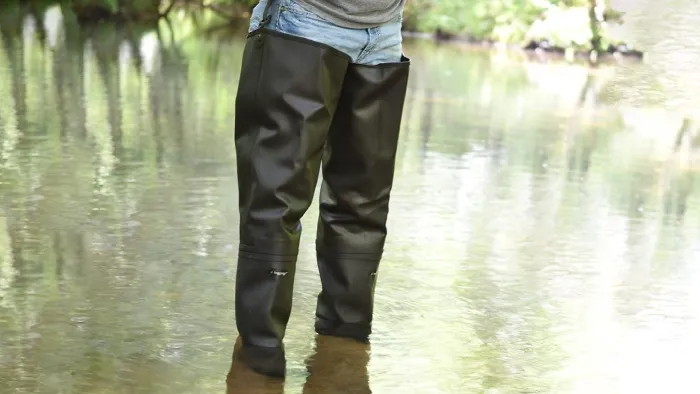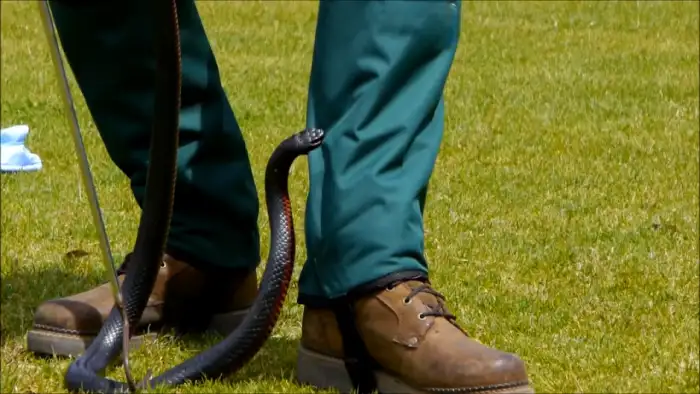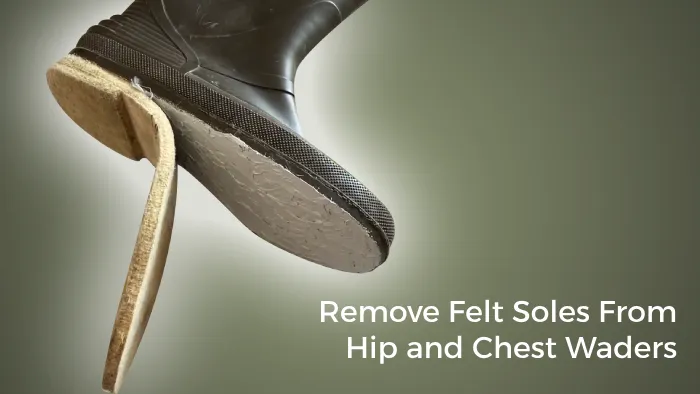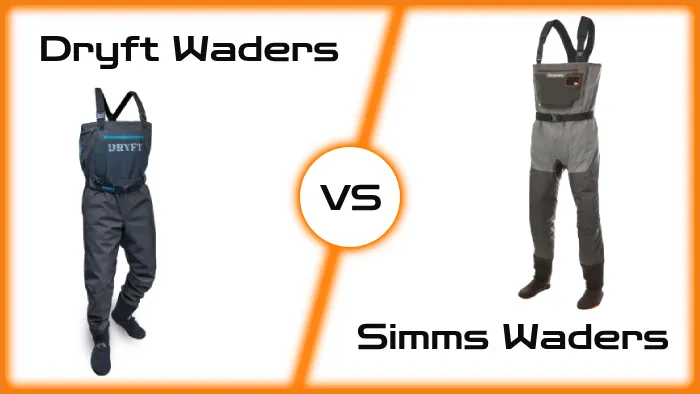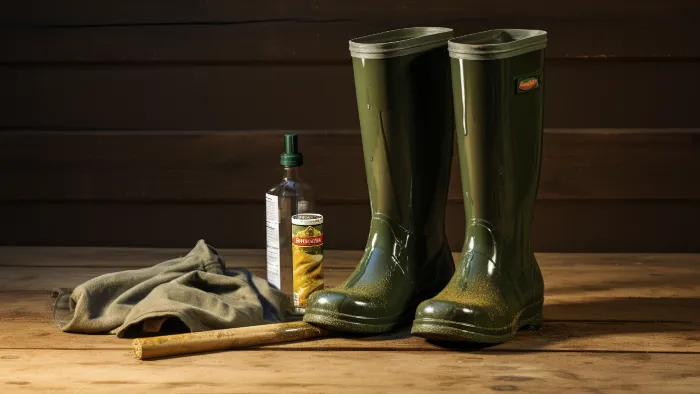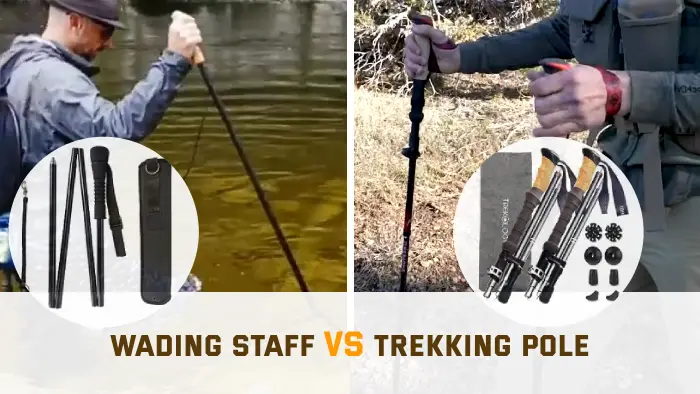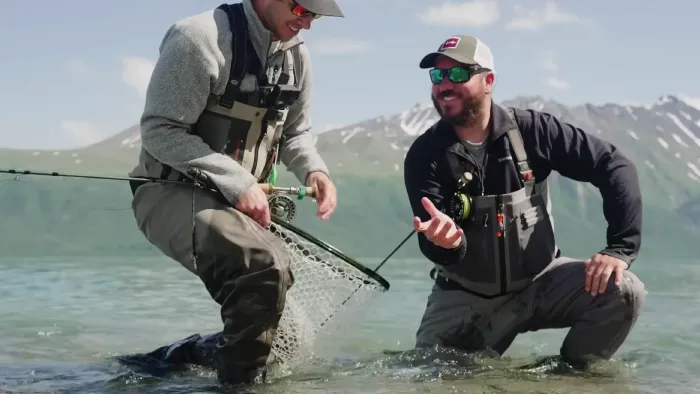Should I Wear Hip Waders in a Float Tube When Fishing: 4 Essential Considerations
Hip waders provide a versatile option, offering comfort and protection during float tube fishing. But you may wonder whether you should always wear hip waders in a float tube.
Wearing hip waders is generally recommended for various benefits. Hip waders provide protection from the elements, including hypothermia and abrasions, which can occur when the body’s temperature falls to dangerous levels (around 95°F or 35°C).
They also offer defense against leeches and other potential irritants in the water. But, if the water is deeper than you can stand in, wearing waders can be unsafe if you slip off from the float tube, as they may fill with water and pose a drowning risk.
The decision to wear hip waders in a float tube also depends on the specific water conditions and personal preferences.
We will discuss all the factors to keep in mind and describe when to wear hip waders in a float tube, along with what types of hip waders are suitable for each situation.
What Should You Consider When Wearing Hip Waders in a Float Tube?
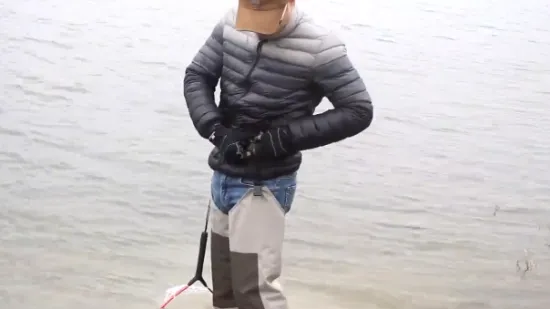
There are several key points to keep in mind when wearing hip waders in a float tube. The following are among them:
- Water temperature
- Wader material
- Sizing
- Safety gear
Let’s discuss these factors in detail:
1. Water Temperature
The appropriate wader type depends on the water temperature. When considering wearing hip waders in a float tube, it’s important to take into account the temperature of the water you’ll be fishing in.
If the water is cold, neoprene waders are your best bet. With a thickness of 3.5 to 5 millimeters, they provide excellent insulation and will keep you warm and comfortable.
On the other hand, if the water is warmer, breathable waders are the way to go. They allow moisture to escape, keeping you cool and dry while still providing protection.
The right wader type will keep you comfortable while you fish, so you can focus on what really matters, catching fish.
2. Wader Material
When you’re planning to wear hip waders in a float tube, you need to understand the different wader materials available. There are three main types of wader materials to choose from:
Neoprene Waders:
Neoprene waders are excellent for colder conditions as they provide good thermal insulation. They are available in various thicknesses, typically ranging from 3.5 to 5 millimeters.
Thicker neoprene waders are suitable for extremely cold waters, while thinner ones are more comfortable in milder conditions. But, they may cause sweating and discomfort in warmer weather.
PVC Waders:
PVC waders, although less expensive, may provide a different level of insulation for winter fishing than neoprene waders. While they are suitable for spring and summer fishing, they lack the warmth needed in colder temperatures.
If you plan on fishing in the warmer seasons or in milder climates, PVC waders can be a great option. They offer durability and affordability, making them a popular choice among anglers.
Breathable Waders:
These waders are made from advanced materials that allow moisture and sweat to escape, preventing water from entering. They are suitable for all temperatures and provide comfort and versatility.
Breathable waders are especially favored for warmer conditions and provide protection against jellyfish in saltwater environments.
3. Sizing
When you are wearing hip waders on a float tube, you need to consider the sizing since proper sizing is critical for ensuring comfort and functionality. To choose the correct size:
- Measure around the widest part of your hips and buttocks to determine the appropriate hip wader size.
- Refer to the sizing chart provided by the specific brand and model of hip waders you are interested in. Different brands may have slightly different sizing standards, so finding the right fit for your body is essential.
Ill-fitting waders can cause discomfort, restrict movement, and pose potential hazards. Your hip waders will fit properly if you measure accurately and refer to the brand’s sizing chart. This will allow you to move freely, without any restrictions, and enjoy your fishing experience to the fullest.
4. Safety Gear
When using a float tube, safety should always be a top priority. Regardless of the type of waders you choose, always wear a life jacket while on the water.
A life jacket will keep you buoyant and provide additional safety in case of emergencies. It is not optional, you should wear it all the time.
How Do You Properly Maintain Your Fishing Hip Waders?
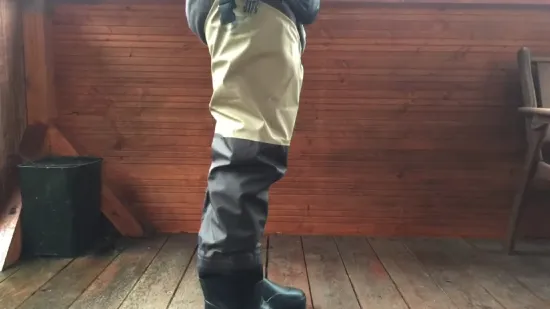
Taking good care of your fishing hip waders is crucial to ensure they remain in excellent condition, prolong their lifespan, and continue to serve you well during your fly fishing adventures. Follow these essential tips to keep your hip waders in great condition:
1. Keep Your Hip Waders Clean
Regular cleaning is essential to remove dirt, debris, and contaminants that can accumulate during your fishing trips.
After each use, make it a habit to spray off your hip waders with a gentle stream of water from a hose. This simple step helps remove surface dirt and prepares them for a more thorough cleaning.
At least once a season or when you notice significant buildup, perform a deep clean. Follow the manufacturer’s care instructions for machine or hand washing your hip waders, using a mild detergent if needed.
2. Dry Your Hip Waders Completely
Moisture and dampness can lead to mold and mildew growth, damaging your hip waders over time.
After each fishing session, thoroughly dry your hip waders inside out. Invert them to expose the interior, hang them or lay them flat in a well-ventilated area, and ensure they are completely dry before storing them.
3. Apply a Direct Water Repellant
To maintain the waterproof capabilities of your hip waders, reapply a direct water repellent to the areas with a waterproof coating.
The water repellent may wear off over time and with regular use, reducing its effectiveness. Follow the product’s instructions and apply the water repellent evenly on the exterior surface to ensure proper protection against water.
4. Transport Your Hip Waders Properly
Avoid unnecessary creasing or folding when transporting your hip waders, which can lead to leaks and weaken the material.
Instead, roll them up gently and secure them with a strap or in a carrying bag designed for waders. This method of transport minimizes stress on the material and preserves the integrity of your hip waders.
5. Store Your Hip Waders Carefully
Proper storage is essential for maintaining the shape and structure of your hip waders. Hanging them upside down from the booties helps to retain their shape and allows air to circulate freely, preventing any musty odors from developing.
6. Repair Small Punctures
Over time, small punctures or pinholes may develop in your hip waders, especially if you fish in rugged terrain.
When you notice these minor damages, you must repair them promptly to prevent water from seeping in and causing more significant issues. Use a sealant or patch kit the manufacturer recommends for a reliable and effective repair.
For more substantial tears or cuts in your hip waders, a patching and sealing process is necessary to ensure a durable fix.
Follow the instructions provided by the manufacturer to properly adhere the patch to the affected area, creating a watertight seal.
7. Rinse Off Saltwater
If you use your hip waders in saltwater environments, it’s crucial to rinse them thoroughly after each use.
Saltwater can be corrosive, and failure to rinse off the salt can lead to damage and reduced lifespan. Rinse the hip waders with fresh water and follow the earlier drying and storage steps.
8. Cut Your Toenails
Before putting on your hip waders, trim your toenails to avoid potential damage to the interior material. Sharp toenails can puncture or wear down the fabric, leading to leaks and decreased performance.
How long do hip waders last?
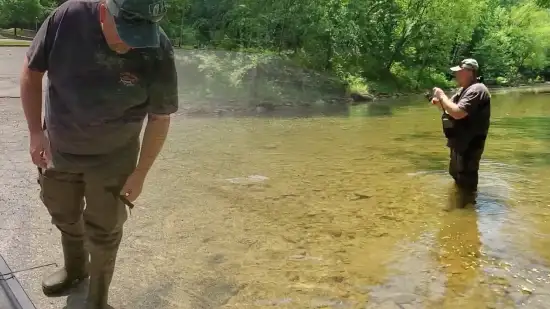
The lifespan of hip waders is influenced by the level of care they receive and the frequency of use. Generally, when given average care and moderate wear, heavy-duty hip waders can be expected to last approximately three years.
But, the durability may vary based on the quality of materials and construction used in their manufacturing. High-quality hip waders, coupled with proper care and maintenance, have the potential to endure for a longer period. Regular cleaning, proper storage, and timely repairs can all contribute to extending the life of hip waders, ensuring they serve their purpose effectively for an extended period.
What to wear under hip waders?
When wearing hip waders, a suitable choice for comfort and protection is a pair of quick-dry pants underneath. These pants act as a barrier between the wader material and your legs, preventing any potential discomfort from chafing.
Quick-dry pants are designed to efficiently wick away moisture, reducing the chances of sweat accumulation while traveling between fishing spots.
The pants’ quick-drying properties help keep your legs cool and comfortable as you move back into the water.
This combination of hip waders and quick-dry pants ensures a practical and hassle-free outfit, providing both convenience and protection during your fishing adventures.
Maximize Your Float Tube Fishing Adventures With Hip Waders
So, whether you’re a seasoned angler or just starting out, wearing hip waders in a float tube can greatly enhance your fishing experience.
Consider the water temperature and choose the appropriate wader material, neoprene for colder waters, and breathable waders for warmer conditions.
Proper sizing is crucial for comfort and functionality, and remember to always wear a life jacket for safety.
Pair them with quick-dry pants for added comfort, and you’re all set for a successful and enjoyable day on the water.
Following these tips and properly maintaining your hip waders can ensure they last longer and serve you well on countless fishing adventures.

